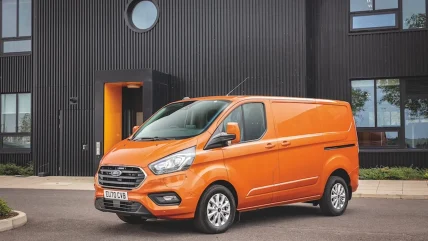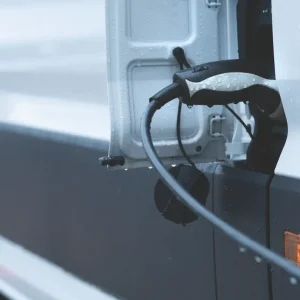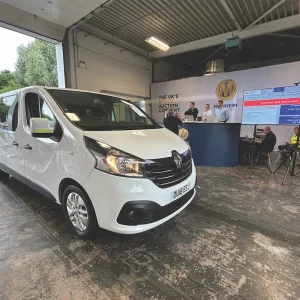
The running costs relating to your LCV are myriad. The biggest of all is actually depreciation. If you purchase your vehicle outright, you experience depreciation in one large sum at trade-in time. If you lease or PCP your van, you pay for it on a monthly basis at a fixed amount. Servicing is variable and tyre replacement not predictable, while insurance is a given for 12 months, in one hit or spread out. So that leaves the biggest variable daily operating cost: fuel. The cost spiral of diesel is the biggest driving factor in inflation, You know it, I know it. That just leaves the government still seemingly unaware.
The vehicle
There are a few things we can do to save fuel and cut our costs. It all starts with good preparation. Make sure your LCV is serviced correctly. It is a cliché yes, but valid despite this. The correct oil in engine and driveline, recommended specification of coolant, changing the air filter at the prescribed interval with the genuine part. It all helps. Most important is your tyres. Make sure they are all at the recommended pressure. Even a few psi under and the rolling resistance increases enough to affect fuel consumption and, left unchecked to dire levels, will cause the tyre to overheat and blowout. If you run near fully laden all the time make sure the tyres are at full-load pressures, but if you carry a few bulky-but-light items, check your vehicle’s info panel or handbook for part-load pressures. Over a working week this might mean changing the pressures once or twice, it is time consuming but has benefits.
Next, turn your attention to the load. Are you permanently carrying tools that are used infrequently ? Have a good look and be ruthless about conserving weight. Again, it might be time consuming to vary the amount of kit you take each day, and the time taken must be balanced against the potential savings. Now, look at aerodynamics. So your high-roof 3.5t panel van is hardly a Grand Prix car, but if you have a roof rack, there will definitely be improvements to make.
Do you need the ladders on every job? If not, take them off. How you carry them makes a difference as well. Consider the side view of your van, the airflow up the bonnet and windscreen form a nice straight line, and the high-roof design follows that shape. Compare it to a Luton van design, with an air dam at the top of the windscreen that greatly increases drag. Your roof load will do the same. If it is safe to do so without causing a rear overhang or making the load unstable, try not to overhang the front of the roof shape with planks, pipe carriers or ladders. Also refrain from stacking high. If you have two ladders, carry them side-by-side on the roof rack, not stacked one on the other, which adds drag. Anything with an obvious wind trap shape should be orientated to minimise its effects.
The driver
The old saying: “The most important nut on the vehicle, is the one behind the wheel” is as true today as ever. Driving technique is the biggest factor in fuel consumption. It is not about dawdling around at 25mph, but if time allows, cruising at 60mph instead of 70mph reaps surprising rewards.
You can actually cut your fuel cost without increasing journey times by making a few simple adjustments to your technique. Firstly, anticipation. Look as far ahead as possible and assess what will affect your speed. For instance, a familiar section of road, with a few bends but no down hills should not require you to brake, you can ease off the accelerator at the right point for each bend and merely allow the speed to decay as required. That is the easiest case, but likewise when approaching roundabouts and simple junctions. If you have a good view, you should find yourself allowing the speed to decay with minimal brake use. You do it anyway, it is just a case of fine-tuning. A queue at a red light; the vehicle ahead drives at a constant speed halfway toward it, then brakes. You ease off the power at first sight of the queue, saving fuel and brake pads, while potentially getting a green light on arrival.
On that note, let us rid ourselves of the coasting myth. Years ago a petrol engine with a carburettor would draw and waste fuel on the overrun simply due to the vacuum acting across the jets – coasting could reduce some of that. However, any electronically-controlled fuel-injected engine, including diesels, has overrun fuel cut off, meaning no fuel at all enters the cylinders when your foot is off the pedal. Coast downhill in neutral and (aside from the inherent dangers) you will actually use more fuel to keep the engine idling.
The greater distance you can travel toward a given hazard off the power before needing to brake, the better your mpg. A good following gap helps too, drive on that car’s back bumper and you brake every time it does, leave a large gap and the concertina effect allows you to respond merely by lifting off the accelerator each time. It takes practice and can be frustrating, but it is worth the effort in the end.
Even when accelerating you can save fuel too, by knowing your vehicle’s engine characteristics. Peak torque revs – between 1,500rpm and 2,500rpm in most diesel LCVs – are where you should be accelerating and hill climbing. There is always a pay off with rpm and gear. In two scenarios you will use an excessive amount of fuel. Low gear high revs and small accelerator pedal travel, or high gear, too-low revs and foot flat to the floor. Aim to rev high enough in the lower gear – at more than half throttle, which generates plenty of turbo boost – to drop the engine speed straight onto the foot of the torque curve, after the upshift. Repeat all the way up the ‘box. Many vans used to follow truck practice in having a green zone marked on the rev counter, but it seems to have fallen from fashion of late. Missing gears out when shifting up is just for show, you have to raise the revs too high in the low gear to miss out the intermediate one. It just wastes fuel.
Many technologies have come along to improve mpg, with varying degrees of success. The Eco mode is merely a different calibration of the accelerator pedal, in some vehicles you cannot tell the difference, while with others it feels like two cylinders are missing.
If you consider, that to drive a given vehicle up a given hill, needs a given amount of fuel, in Eco mode you just end up putting your foot down further anyhow. An experienced driver does not need it. There is auto stop/start, mainly a box-ticking exercise on CO2 regulations, many vehicles deselect it when the low fuel level warning illuminates since it can take more fuel for multiple restarts than it does to continually idle. If you are in a traffic jam where the engine stops and restarts once every two or three seconds, you are probably better off deselecting it, if your crawling is punctuated with stops of 20 seconds or more, it will work to some benefit. A fairly new van might be a mild hybrid electric vehicle (MHEV, pictured on p21). In this case, when you lift from the accelerator pedal you experience a stronger engine-braking effect, as the small electric booster motor becomes a generator, regenerating charge to the battery. Sometimes it has too much of a braking effect, actually slowing the vehicle on gentle down slopes. Do not press the accelerator with any real force, but just the first fraction of an inch will stop the regenerative braking but not burn any fuel. The small motor will then assist the engine during acceleration and hill climbing, so MHEVs offer real benefit where mpg is concerned.
Automatic transmissions have always had a reputation for worse mpg, but their use is now widespread in LCVs. The losses from the fluid-flywheel torque converter have been all but eradicated by the use of a lock-up clutch within the converter once on the move, leaving move off, and hence queuing traffic, as the biggest penalty. Aside from that, it was the fewer number of ratios in the ‘box that used more fuel, but now, with many automatics having eight or even more forward gears, the gap is shrinking. Drive them just the same, but you will need to lift off even sooner, as they lack the engine braking of a manual. It is best to generally avoid Sport mode, since it hangs onto lower gears for longer and shifts down sooner. It can be beneficial when towing, but most modern auto gearboxes use less fuel just left in drive. It all takes practice, but all it takes is practice, and decent savings await.





